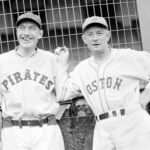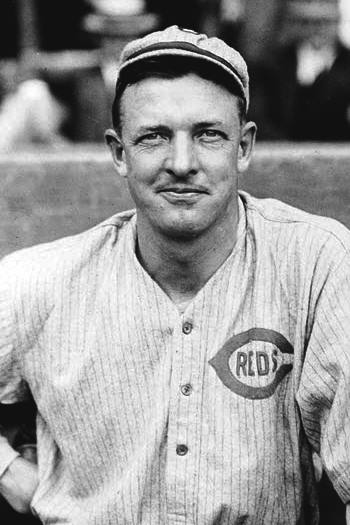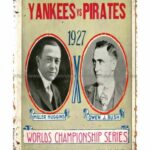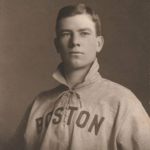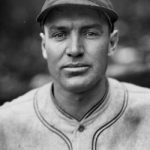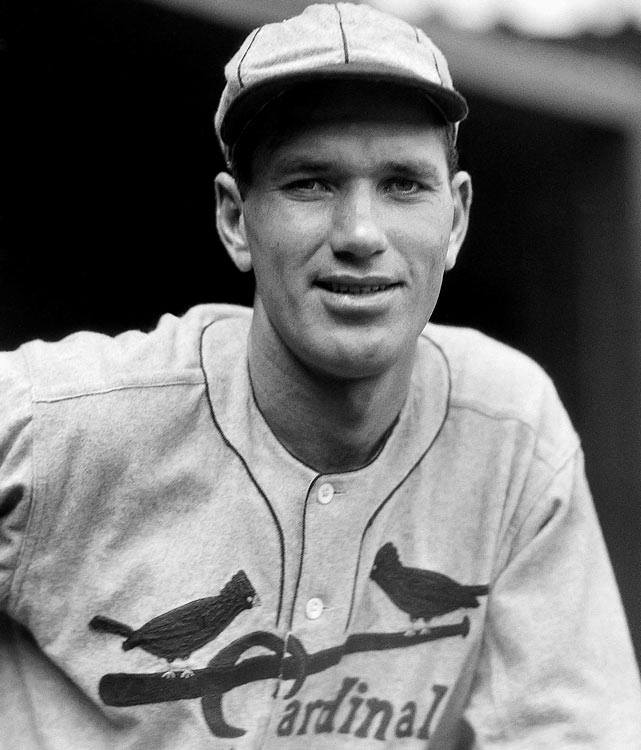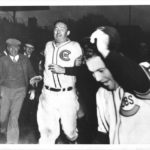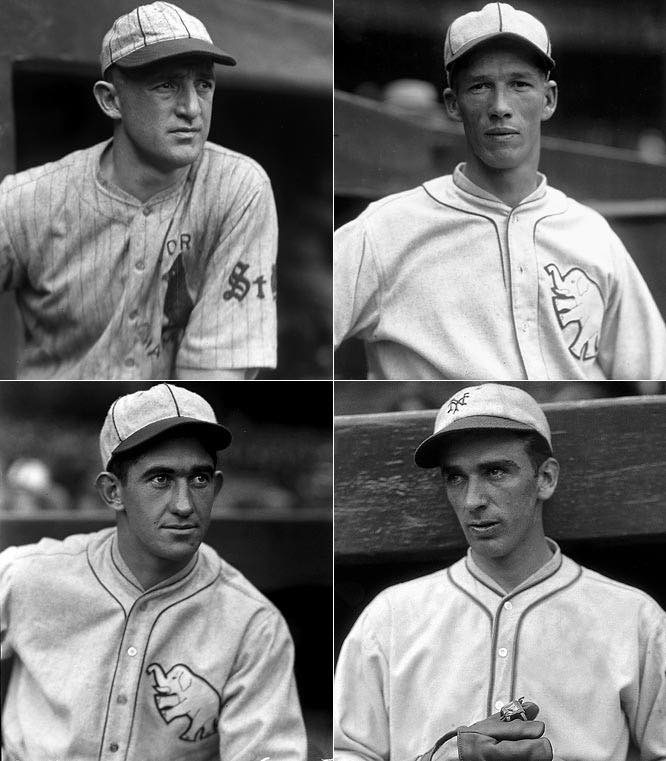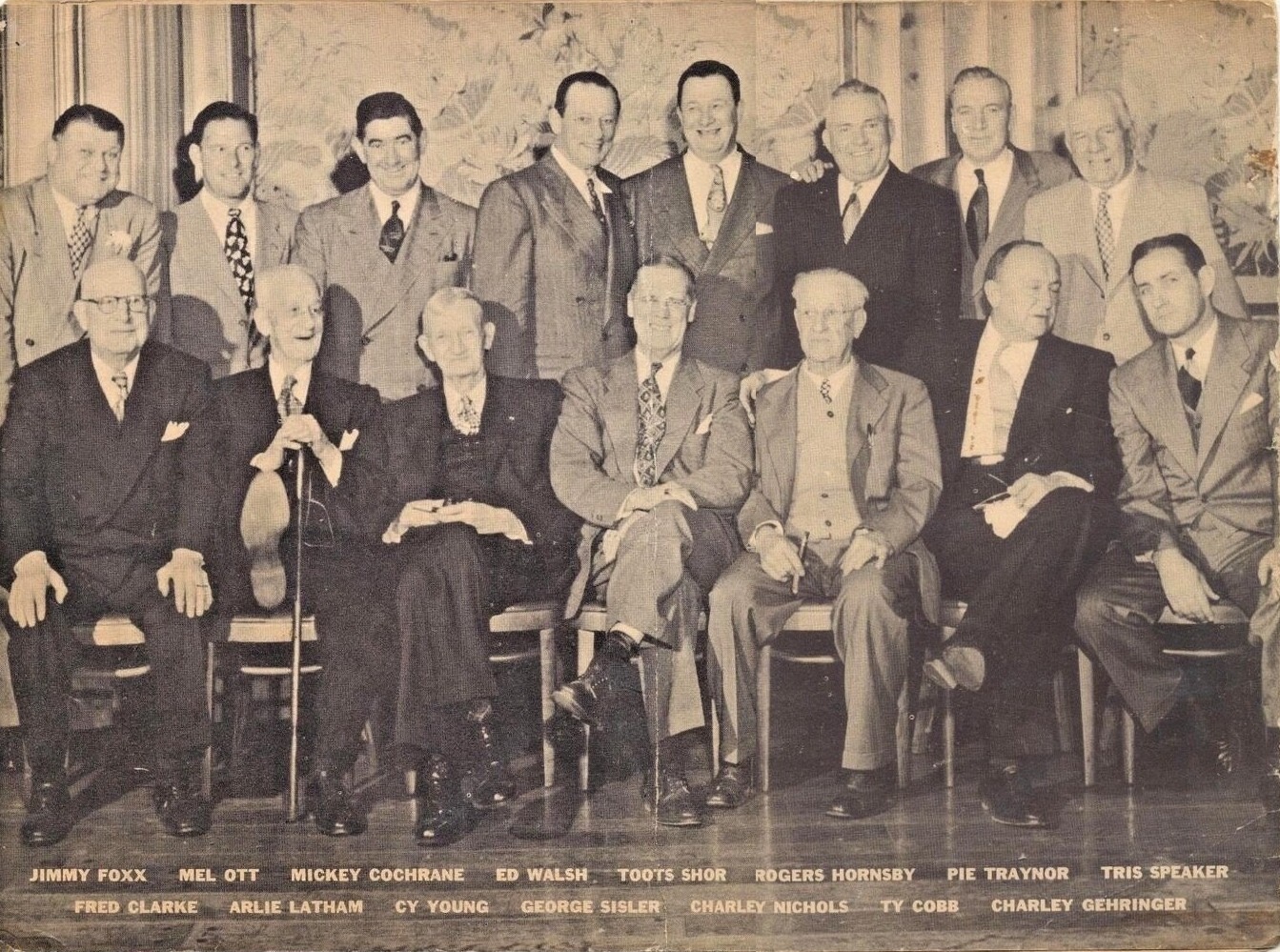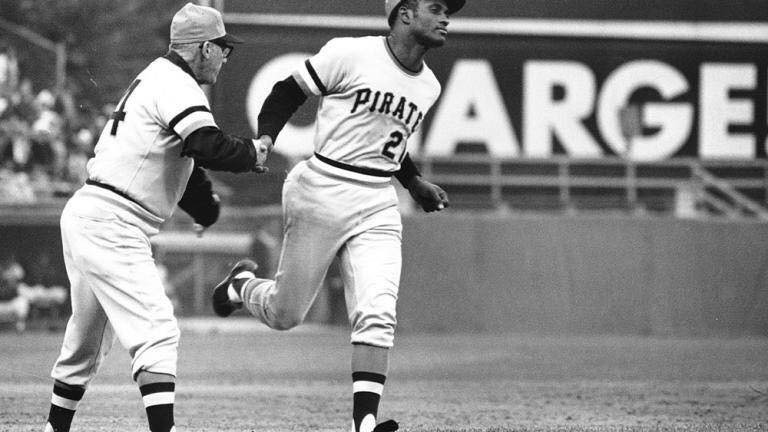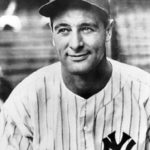Pie Traynor Stats & Facts
Pie Traynor
Position: Third Baseman
Bats: Right • Throws: Right
6-0, 170lb (183cm, 77kg)
Born: November 11, 1898 in Framingham, MA us
Died: March 16, 1972 in Pittsburgh, PA
Buried: Homewood Cemetery, Pittsburgh, PA
High School: Somerville HS (Somerville, MA)
Debut: September 15, 1920 (5,105th in major league history)
vs. BSN 2 AB, 1 H, 0 HR, 1 RBI, 0 SB
Last Game: August 14, 1937
vs. STL 0 AB, 0 H, 0 HR, 0 RBI, 0 SB
Hall of Fame: Inducted as Player in 1948. (Voted by BBWAA on 93/121 ballots)
View Pie Traynor’s Page at the Baseball Hall of Fame (plaque, photos, videos).
Full Name: Harold Joseph Traynor
View Player Info from the B-R Bullpen
View Player Bio from the SABR BioProject
Nine Players Who Debuted 1920
Bullet Rogan
Joe Sewell
Oscar Charleston
Pie Traynor
Marty McManus
Bob Meusel
Cristóbal Torriente
Biz Mackey
Bibb Falk
Rip Collins
All-Time Teammate Team
Coming Soon
Notable Events and Chronology
Biography
Barney Dreyfuss ushered in the second glory era of the Pittsburgh Pirates when he purchased Pie Traynor from Portsmouth (Virginia League) in 1920. The classy, intelligent Massachusetts native had been ignored by both Boston clubs. He came up as a shortstop but was moved to third base by Pittsburgh manager Bill McKechnie in 1922 – the first of 12 straight seasons in which he played 130 or more games.
Traynor topped the .300 mark ten times, and from 1925 through 1930 batted .342. Yet, playing on teams that featured the Waner brothers, he led the Pirates in hitting just once, with a .356 mark in 1929. When he hit .366 in 1930, teammate Paul Waner hit .368. Traynor usually made contact, striking out only 278 times in his career. He fanned only seven times in 540 at-bats in 1930.
At third base Traynor had a great arm and was outstanding on bunts and slow choppers. Teamed with defensive whiz Glenn Wright at shortstop, and in a lineup with hitting stars Max Carey and Kiki Cuyler, in 1925 Traynor helped Pittsburgh to its first pennant since 1909. He hit .346 in their seven-game World Series victory over Washington, and homered off Walter Johnson in the opener. He handled 24 chances without an error.
Traynor hit .342 in 1927, led NL third basemen in double plays for the fourth straight year, and had three hits on October 1 when Pittsburgh clinched another pennant. In Game Three of the WS, he broke up Herb Pennock’s perfect game with an eighth-inning single, but the Pirates were swept by the Yankees.
Playing in spacious Forbes Field, Traynor hit few home runs, but consistently reached double figures in doubles and triples. He tied teammate Carey for the NL lead with 19 three-base hits in 1923. He remains among the Pirates’ all-time leaders in every offensive category but home runs.
While posting a record-tying seventh season as the NL putout leader at third base despite a sore throwing arm, Traynor replaced George Gibson as Pirate manager in June 1934. He played occasionally in 1935 and 1937, finishing with a NL record 2,288 putouts at 3B. He managed for six seasons, leaving in 1939 with what was then the second-most wins in Pirate history (457). He came close to a pennant in 1938, but Chicago’s Gabby Hartnett’s “Homer in the Gloamin'” snatched it away. Traynor scouted for the Pirates until his death.
Widely regarded for years as baseball’s greatest third baseman, Traynor was elected to the Hall of Fame in 1948, and was honored as a member of the all-time team selected in 1969 for baseball’s centennial. He was one of Pittsburgh’s most popular players, eagerly adopted by the community though he never lost his New England accent. The Giants’ John McGraw, himself a third baseman, called Traynor the greatest team player in the game. Though there are several stories about his nickname, it seems to have come from Traynor’s childhood taste for pies.
@ET-DC@eyJkeW5hbWljIjp0cnVlLCJjb250ZW50IjoicG9zdF90YWdzIiwic2V0dGluZ3MiOnsiYmVmb3JlIjoiTGVhcm4gTW9yZSBhYm91dCB0aGUgdGVhbXMsIHBsYXllcnMsIGJhbGwgcGFya3MgYW5kIGV2ZW50cyB0aGF0IGhhcHBlbmVkIG9uIHRoaXMgZGF0ZSBpbiBoaXN0b3J5IC0gLSAtIC0gLSAtIC0gIiwiYWZ0ZXIiOiIiLCJsaW5rX3RvX3Rlcm1fcGFnZSI6Im9uIiwic2VwYXJhdG9yIjoiIHwgIiwiY2F0ZWdvcnlfdHlwZSI6InBvc3RfdGFnIn19@
Factoids, Quotes, Milestones and Odd Facts
The original “Mr. Pirate,” Pie Traynor served for the Bucs as player, manager, sportscaster, and scout for more than half a century. He was the greatest defensive third baseman of his time, and he consistently batted .300, finishing in the top ten in batting in the National League six times. Most experts considered him the finest third baseman of the first half of the 20th century.
Played For
Pittsburgh Pirates (1920-1937)
Managed
Pittsburgh Pirates (1934-1939)
Similar: None, though White Sox’ third baseman Willie Kamm was compared to Traynor defensively.
Linked: Paul Waner, Lloyd Waner, Max Carey, Arky Vaughan
Best Season, 1923
Just 23 years old, young Pie batted .338 with 208 hits and 108 runs scored. He also batted in 101 runners, stole 28 bases, and hit 19 triples to lead the league. Traynor was the #4 batter in the Bucs lineup for most of his career, surrounded by fellow Hall of Famers Lloyd Waner, Max Carey, Kiki Cuyler, Arky Vaughan, and Paul Waner. He had other years where he batted for a higher average – but he rarely played as many games (153) as he did in ’23.
Post-Season Appearances
1925 World Series
1927 World Series
Where He Played: Third base; Traynor did play 50 games at shortstop and one game at first base.
Batting Feats
-
- July 7, 1923: Cycle…
Hitting Streaks
24 games (1929)
21 games (1930)
All-Star Selections
1933 NL
1934 NL
Replaced
Clyde “Pooch” Barnhart, whose bat was major league calibre, but whose glove wasn’t. After Traynor supplanted Barnhart at the hot corner in 1922, Clyde was used by the Pirates as a fourth outfielder.
Replaced By
When Arky Vaughan emerged as the Bucs’ shortstop in 1932, and slick-fielding infielder Tommy Thevenow began to knock on the door about the same time, Traynor’s time was running out. By 1935, Thevenow was at third base alongside Vaughan. Thevenow never hit well enough to stay in the lineup full-time, so Bill Brubaker was given the third base job in 1936.
Best Strength as a Player
His defensive range and throwing arm.
Largest Weakness as a Player
By most accounts, Traynor was a bad-ball hitter. He never exhibited great patience at the plate, and his on-base percentages suffered from that. His batting average was the majority of his value offensively.
Other Resources & Links
Coming Soon
If you would like to add a link or add information for player pages, please contact us here.


